A PALINDROME DATE INSPIRES MIRROR THOUGHTS
It’s a new decade, YaUdah Bistro patrons, and we salute you with sincere appreciation for your loyal patronage over the years. One of the curious aspects of this new decade is the ‘palindrome date’ approaching rapidly – reads the same forwards and backwards.
Yes, I’m referring to this Sunday, February 2, 2020, a date which, if you remove the punctuation, reads
02022020
Happy Palindrome Day!
Among the strange habits of the curious and the inquisitive is a search for palindromes – not easy to find complete sentences that mirror themselves.
So where do palindromes come from? The Greeks, like so much else:
‘The third century BCE Greek poet Sotades was said to have written such vulgar satires that King Ptolemy II had him sewn up in a sack and thrown into the sea, for insulting the king in one of his verses. But his coarse, vile verses must have been clever, for Sotades is reputed to have invented palindromes, which are sometimes called Sotadics in his honor.
Palindromes take their more common name from the Greek palin dromo, which means “running back again,” and they are simply anagrams that read the same backward as forward.
Making palindromes has been a favorite word game since at least early Grecian times. English, with the largest and most varied vocabulary of all languages, offers the most viable ground for creating palindromes.
It is said that Sir Thomas Urquhart even invented a universal language based entirely on palindromes.

One of the most famous palindromes – one which schoolboys learn in their history classes – has to do with the unlucky fellow whose grand plan fell victim to… anopheles mosquitoes…

Wikipedia tell us ‘Ferdinand Marie, Vicomte de Lesseps was a French diplomat and later developer of the Suez Canal, which in 1869 joined the Mediterranean and Red Seas, substantially reducing sailing distances and times between Europe and East Asia.
He attempted to repeat this success with an effort to build a Panama Canal at sea level during the 1880s, but the project was devastated by epidemics of malaria and yellow fever in the area, as well as beset by financial problems, and the planned de Lesseps Panama Canal was never completed. Eventually, the project was bought out by the United States, which solved the medical problems and changed the design to a non-sea level canal with locks. It was completed in 1914.’
The story of de Lesseps is summarized in the fine old palindrome that goes

(Read it backwards, read it forwards – it’s the same.) (Kids learned this as a way to memorize a boring historical fact.)

Palindromes are mirrors, and like mirrors are fascinating, compelling, bewitching.

Why do humans keep looking in the mirror? (You are not seeing your image, by the way, but a reverse of it, which has its own subtle implications.)

The selfie is a kind of mirror, and selfie-haters are probably people who would not approve of those who, like the tragic Narcissus, are fatally entranced with their own reflections:
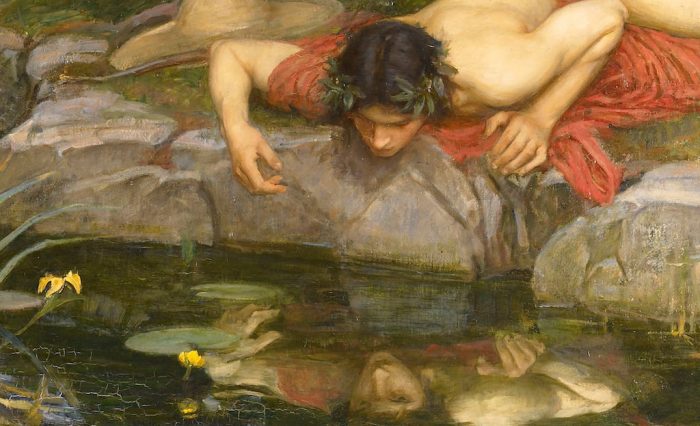
One day while hunting, Narcissus comes across an untouched, glassy spring. He is drawn to its beauty and lies down to take a drink, but what he sees in the still water enchants him. He is in love with what he sees and is inflamed by the features of the vision: the hair, his eyes, porcelain skin, and rosy cheeks. Attempts to kiss and hold the reflection are in vain, and Narcissus is only frustrated by the teasing reactions of the image. When Narcissus winks, the image winks back, when Narcissus waves, the image waves, and when he cries tears, he sees that the image also cries. Narcissus cannot understand why he cannot reach what he so desperately desires.
The tormented boy agonizes over his unrequited love. He cannot leave the spring and is trapped in his frozen gaze at his reflection, pining away for the boy in the water who rejects all advances. Then Narcissus realizes that the image is his, but it’s too late, as he has already fallen tragically in love with himself. Knowing that he can never have what he desires, his body withers away in despair. When Narcissus says “Goodbye” to the reflection, Echo’s voice says “Goodbye.” At that moment, Narcissus dies while peering into the spring.

In the “Blood of a Poet”, French artist Jean Cocteau made a dreamy movie in which his star (and boyfriend) splashed his way right through a mirror:
Can you even imagine a world without mirrors? From infancy?
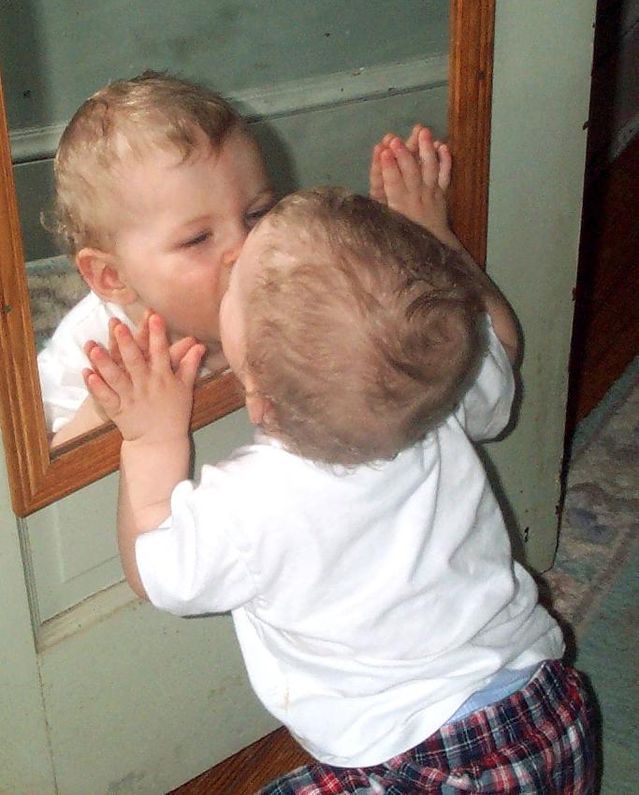
There are those, however, who, lacking a reflection, positively abhor them:

The naughty / nasty Count Dracula was certainly not one known for much self-reflection.
And of course the psychologists have to have a go at the mirror as well: ‘Strictly speaking, when you look in a mirror, you see a face that you recognize as your own. This in and of itself is a remarkable feat—other animals generally can’t do this. A dog looking in a mirror sees another dog. (At least, that’s what we infer from observing its behavior.) Human infants don’t seem to recognize their own faces, either.
But recognizing yourself is more than just identifying the face in the mirror as your own. When you flip through your photo album, you see yourself in that snapshot of a toddler on a tricycle, that picture of a grade-schooler standing behind a science fair project, the high school yearbook portrait of an awkward adolescent, and that photo of a svelte young adult in a college graduation gown. None of these look like the face staring back in the mirror. Yet somehow your self ties all these disparate persons together.’
How can they be so sure an animal doesn’t recognize itself? This author’s elderly beruk sumatera (‘pig-tailed macaque’ in English) certainly found the monkey staring back at her fascinating:
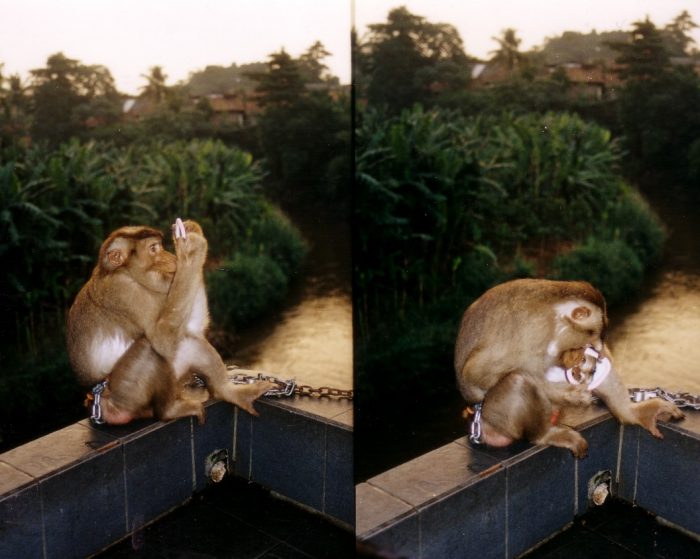
But then Gloria Gorilla decided it wasn’t worth the effort so she bit down on the mirror, cracking it – and incurring seven years of bad luck.

But each monkey year equals four human years so poor Gloria is going to be cursed for the next 28 years… if she lives so long.
There is even a mirror blog for enthusiasts (of course they are trying to sell you mirrors as well but that’s part of the game).
The easy easier easiest kind of palindrome is the ‘mirror word’ that looks the same forward or backward:

A bigger challenge for palindrome enthusiasts is to create sentences that make sense – at least some sense…
Sample shorties:
Never odd or even.
Dammit, I’m mad!
We panic in a pew.
Won’t lovers revolt now?
Don’t nod.
Sir, I demand, I am a maid named Iris.
(or)
Red rum, sir, is murder.
Ma is as selfless as I am.
Nurse, I spy gypsies. Run!
He lived as a devil, he?
(or)
Dogma? I am God.
I did, did I?
No, it is opposition.

(or one that this author proudly invented)
Leon! Noël! Step on no pets! Leon! Noël!
Many other lands & languages have their own palindrome traditions as well:
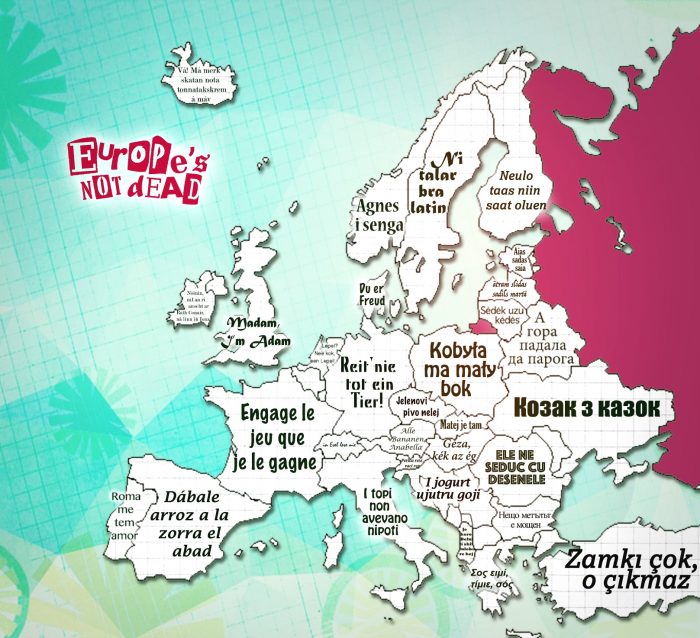
THE MIRROR IMAGE
Reality does curious things when it is reflected. Pictures gain double significance, often a sinister one…
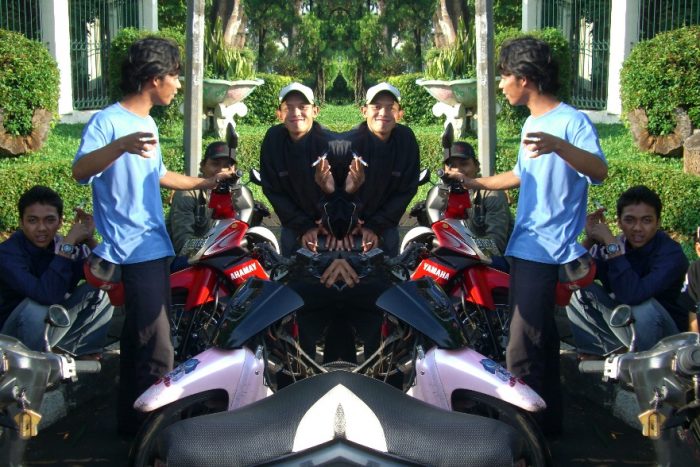
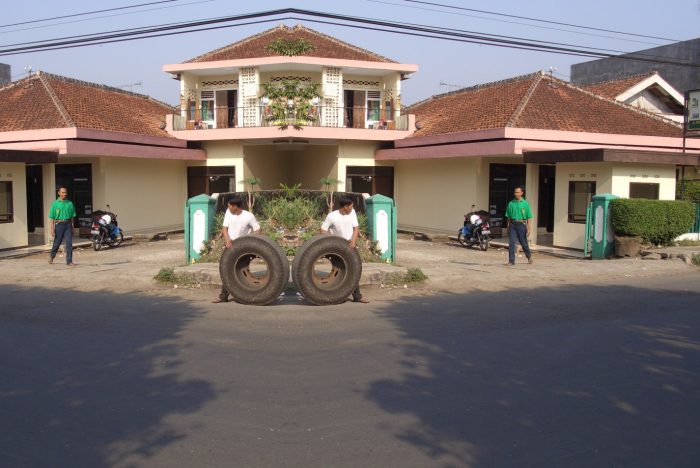
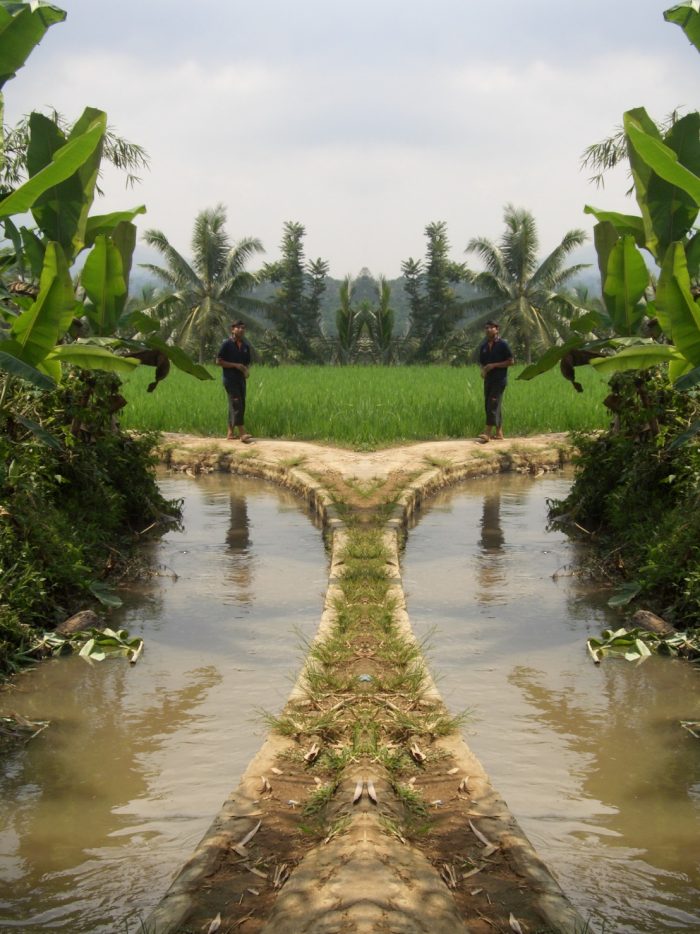
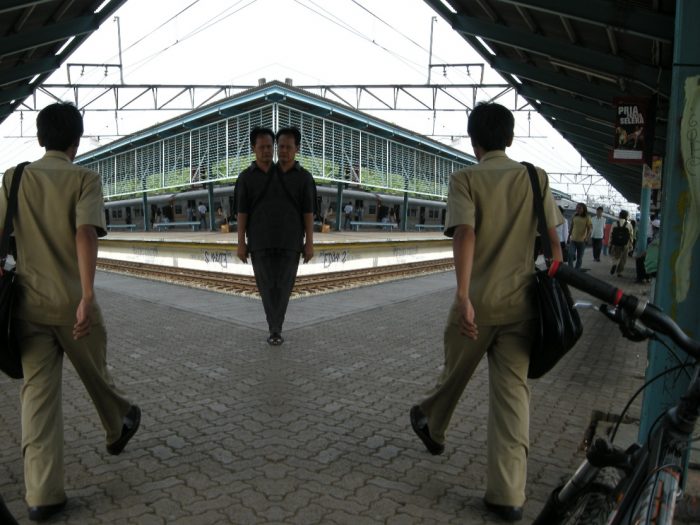
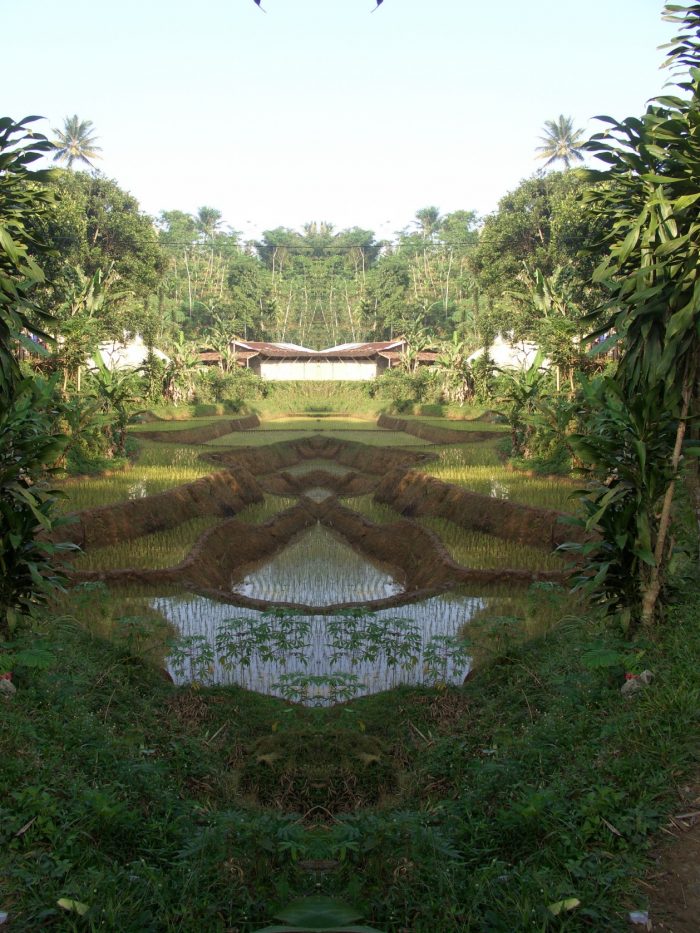

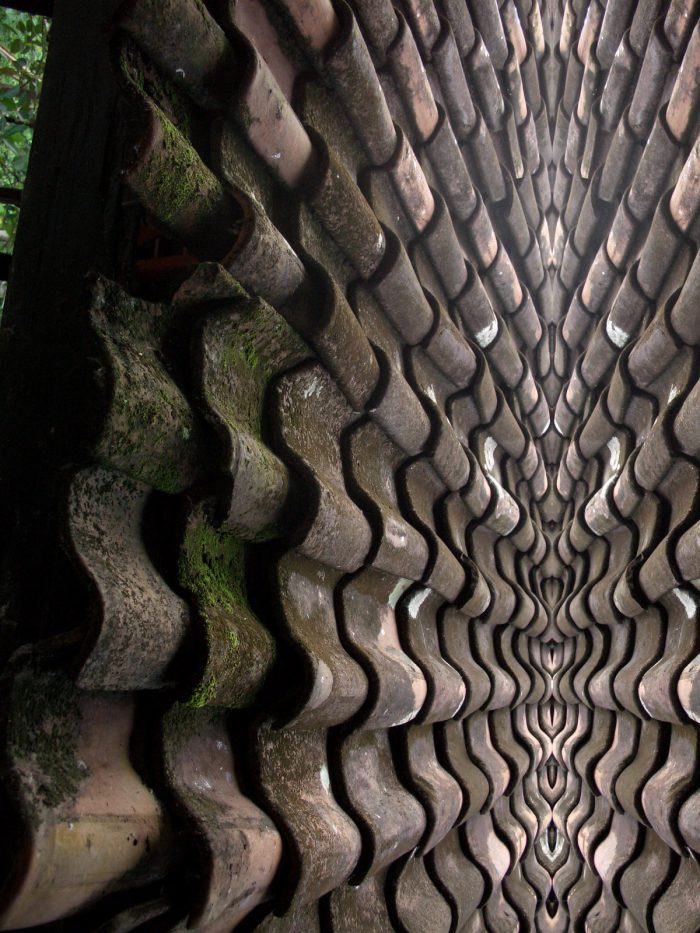
There seems to be hidden meanings to the image … Trust you have enjoyed the mystery of the PALINDROME PICTURES…
And upon reflection… we are getting hungry. Where better to fulfill our heart’s aspirations than YaUdah Bistro, where fine food & drink, priced-right at all hours, awaits you?
No need for mirrors here: it’s the real thing: EATS.

Ya Udah Bistro, in Menteng and now in Serpong, serving robust, fresh, hygienic and authentic Euro-Asian cuisine for two decades plus – at a right price. Eat, drink make merry in our open-air dining environment (Serpong also has a no-smoking, air-conditioned section where self-righteous non-smokers can non-smoke all the evening long).
The Bistro is famed for consistent superior quality meats, pasta, fish and salads to calm your roaring hunger.

This is in fact a historic site in Central Jakarta, featured approvingly in famed tour guides like Lonely Planet. Just don’t head to Jalan Jaksa because we are long gone.
Come around to our convenient location, bring your friends and invite your enemies too (“Keep your friends close – and your enemies closer” – Lyndon Baines Johnson).

Smoke, drink, eat, laugh and reflect upon all your blessings (and curses), in an elegant, polite Menteng milieu, a breezy outdoor atmosphere where you can plot out your big schemes for 2020.
Hey, thanks for reading our Ya Udah Bistro blog. Please check out some of the earlier newsletters on the Ya Udah Bistro website. We do appreciate your comments on these fanciful expositions as well. All Comments welcome!



